You might think of national parks as peaceful escapes, places to soak in nature and breathe fresh air. And they are! But lurking in the grass, coiled under a sun-warmed rock, or slithering across a hiking trail is a reminder that you’re not the only one enjoying the great outdoors.
Some parks have more of these scaly residents than you’d probably like. From the swamps of Florida to the deserts of Arizona, these serpentine creatures thrive in some of the most stunning landscapes in the U.S. You could be admiring a breathtaking canyon one moment and suddenly locking eyes with a rattlesnake the next.
So, if the idea of crossing paths with a snake sends shivers down your spine—or if you’re just fascinated by them—this list is for you. Let’s take a look at 22 national parks where snakes are not just visitors… they run the place.
Everglades National Park
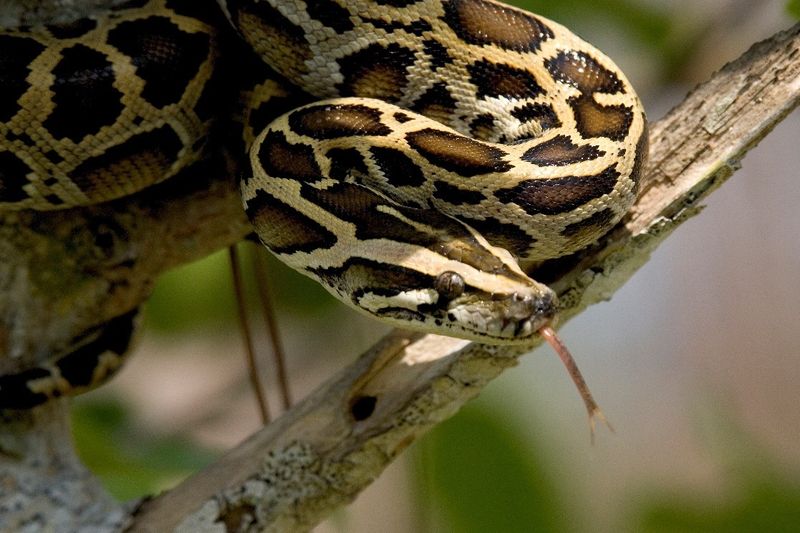
Everglades National Park in Florida is a massive subtropical wilderness that snakes love. You’ll find pythons, rattlesnakes, and water moccasins here. The park’s watery habitats and warm climate make it an ideal home for these reptiles. Walking the trails, you might spot a snake basking in the sun.
Keep an eye open and stick to marked paths. Though snakes here are generally not aggressive, it’s wise to maintain a respectful distance. Always wear sturdy shoes and consider bringing a walking stick to rustle the grass ahead of you.
Great Smoky Mountains National Park
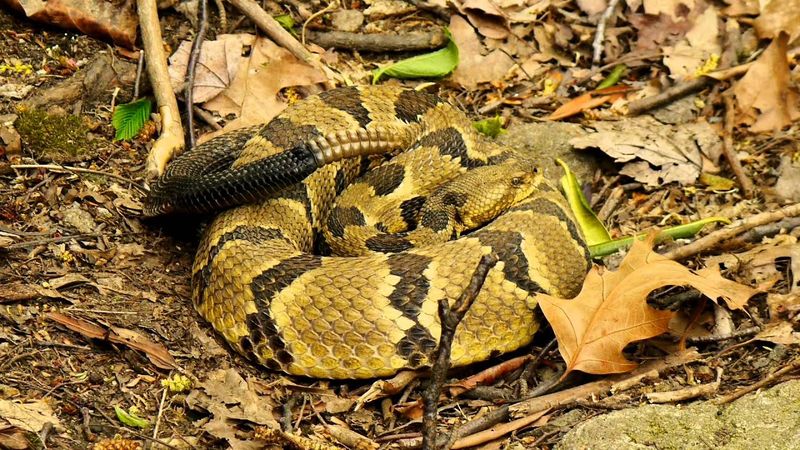
The Great Smoky Mountains National Park, spanning North Carolina and Tennessee, is teeming with snake activity. Timber rattlesnakes and copperheads are the most common. The park’s diverse flora and elevation changes create perfect snake habitats. While hiking, you might encounter these snakes sunning themselves on rocks.
When venturing into the park, awareness is crucial. Stay on trails and watch your step. With their camouflaged patterns, snakes blend easily with fallen leaves. If you hear a rattle, pause and locate the source before proceeding. This cautious approach ensures a safe and enjoyable adventure.
Saguaro National Park
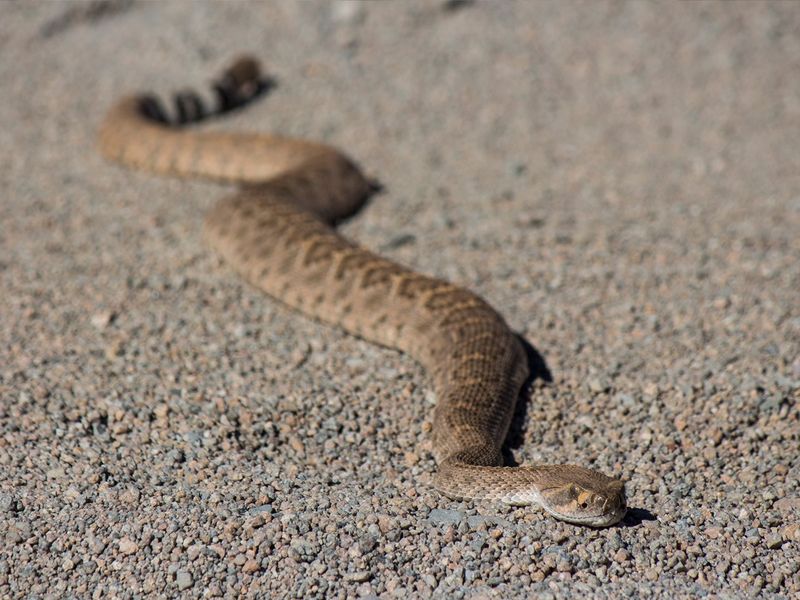
Saguaro National Park in Arizona offers a unique desert ecosystem where snakes are frequent sights. The park is home to the western diamondback rattlesnake, a well-known desert dweller. Snakes are often found near the iconic saguaro cacti.
The harsh desert climate keeps these reptiles active during cooler times of the day. To avoid surprises, hike during daylight and stay on clear paths. Always carry water and a flashlight for early or late treks. With a little vigilance, your desert exploration can be both exciting and safe, and you might just glimpse a rattler in its natural habitat.
Big Bend National Park
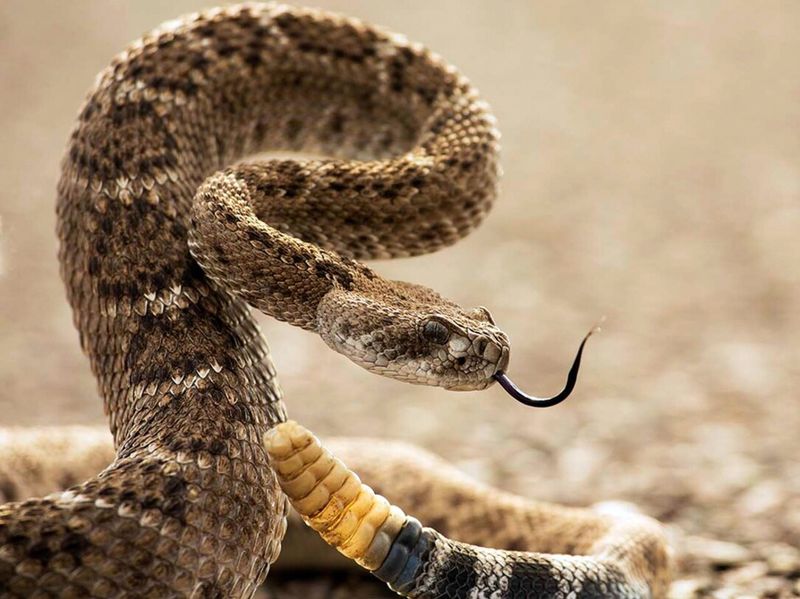
In Texas, Big Bend National Park is known for its rough landscapes and rich snake populations. The rock rattlesnake, in particular, often catches visitors off guard. Its habitat consists of rocky crevices and desert scrub.
When exploring this park, be cautious around rocks and crevices. The snakes blend well into their surroundings and can be hard to spot. Carry a walking stick to probe areas before stepping over them. Despite their stealth, snakes in Big Bend are typically not aggressive unless provoked. With alertness and respect, your visit can be both safe and fulfilling.
Zion National Park
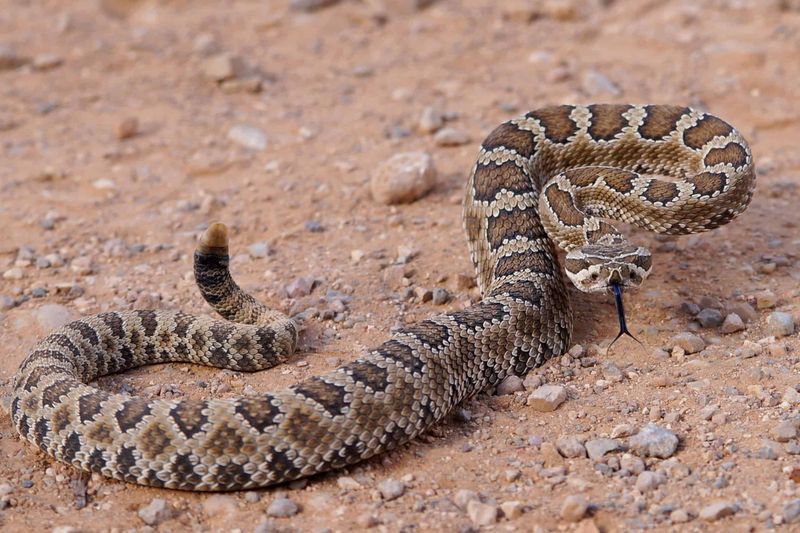
Zion National Park in Utah is famous for its striking canyons and diverse wildlife, including an array of snakes. The gopher snake is frequently seen, often mistaken for its venomous counterparts due to its size and pattern.
While snakes are prevalent, staying on designated trails minimizes encounters. These reptiles play a crucial role in controlling the rodent population, supporting the park’s ecosystem. If hiking in Zion, a keen eye and cautious steps will help you appreciate the scenery without an unwanted surprise. Remember, these non-venomous snakes are harmless and beneficial.
Joshua Tree National Park
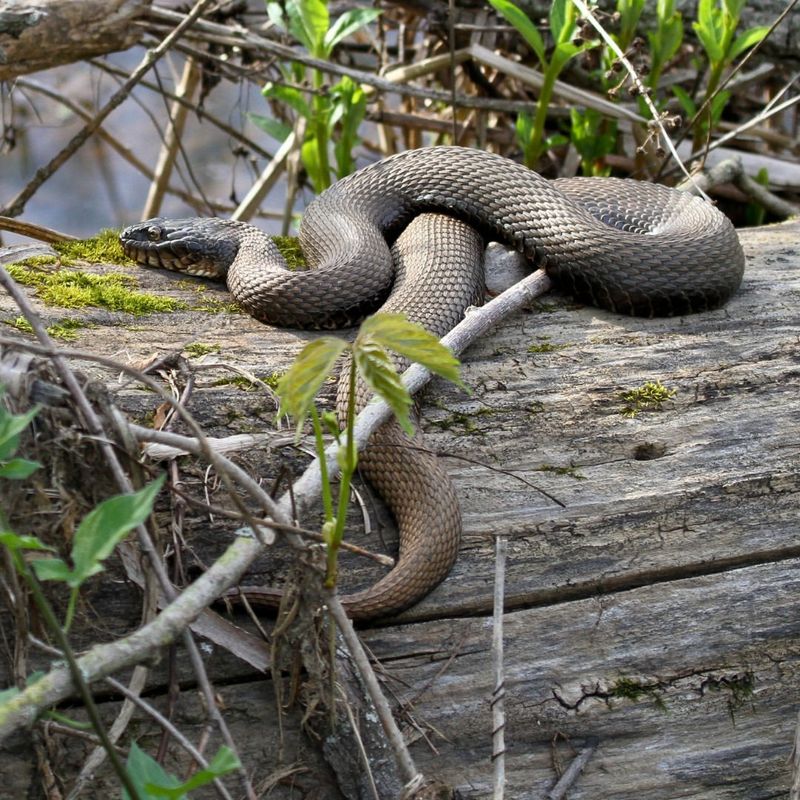
Joshua Tree National Park’s desert landscape in California is home to the sidewinder, a snake noted for its unique sideways movement. It thrives in the park’s sandy and rocky terrain. This snake’s tracks are often seen weaving through the desert sand.
Visitors should be cautious, especially when hiking off the beaten path. Sidewinders are elusive but not aggressive. Wearing boots and watching where you step are wise precautions. By respecting their space and staying informed about local wildlife, you can enjoy the park’s strange beauty and perhaps see a sidewinder in action.
Grand Canyon National Park
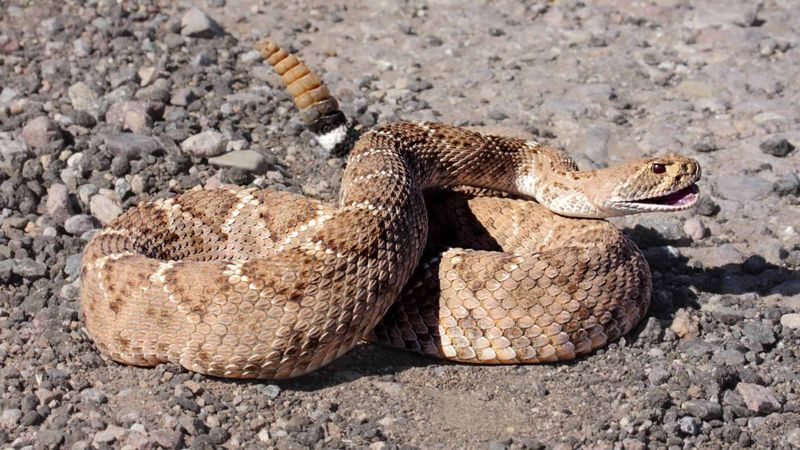
Grand Canyon National Park in Arizona doesn’t just offer spectacular views, but also a variety of snake species. The black-tailed rattlesnake is particularly common, often found near the rim’s rocky areas.
When visiting this iconic park, keep a lookout for these snakes sunbathing on rocks. Their presence highlights the park’s wild and untamed nature. While exploring, sticking to marked trails reduces the risk of encounters. Remember that rattlesnakes serve a vital role in the ecosystem by controlling pest populations. With proper awareness, your Grand Canyon adventure can be both thrilling and secure.
Shenandoah National Park
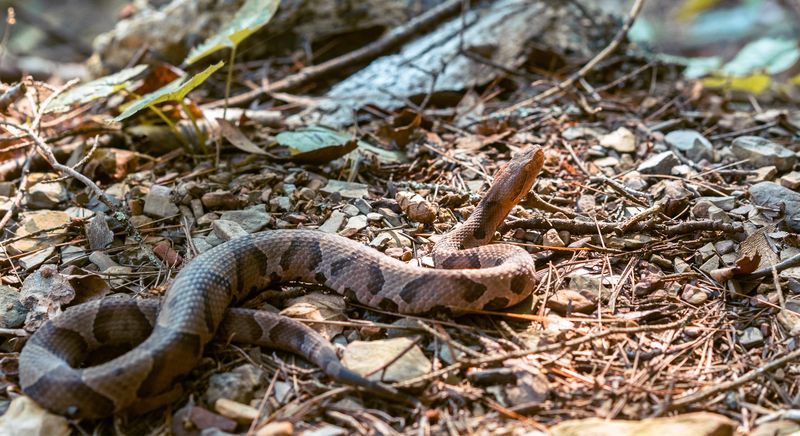
Shenandoah National Park in Virginia is a haven for nature lovers, but it’s also home to copperhead snakes. These snakes blend seamlessly with the forest floor, making them hard to spot. They’re often found along trails, hunting for small prey.
To avoid unpleasant surprises, tread carefully and observe your surroundings. Copperheads are not typically aggressive, but caution is key. Consider hiking in groups and making noise to alert snakes of your presence. With respect for these creatures and their habitats, Shenandoah’s trails can be both captivating and safe for exploration.
Yellowstone National Park
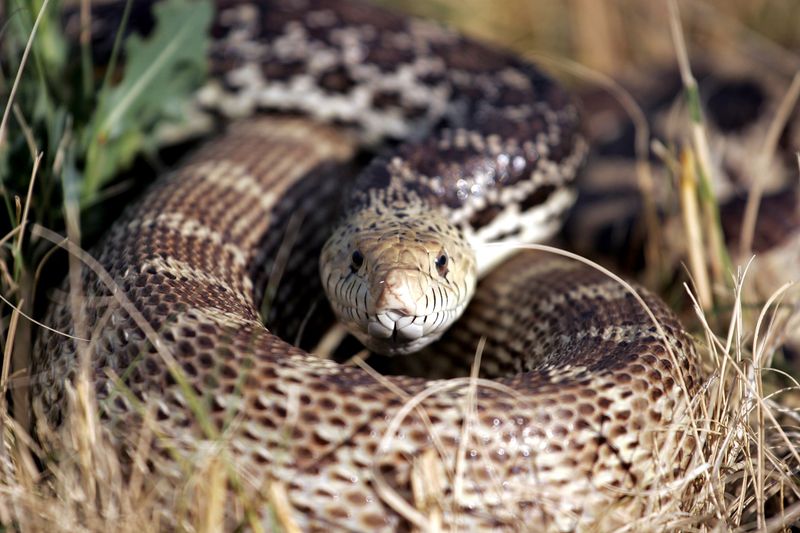
Yellowstone National Park, spanning several states, offers geothermal marvels and fascinating wildlife, including the bull snake. These snakes are often seen near thermal areas, drawn by the warmth.
Bull snakes are non-venomous, resembling rattlesnakes with their size and patterns. While exploring, maintain awareness of your surroundings. Keep to boardwalks near geothermal features to avoid surprising encounters. Understanding the role of these snakes in controlling the rodent population enhances the park’s ecological balance. With mindfulness and respect for nature, your visit to Yellowstone can be an unforgettable experience, full of discovery and appreciation.
Acadia National Park
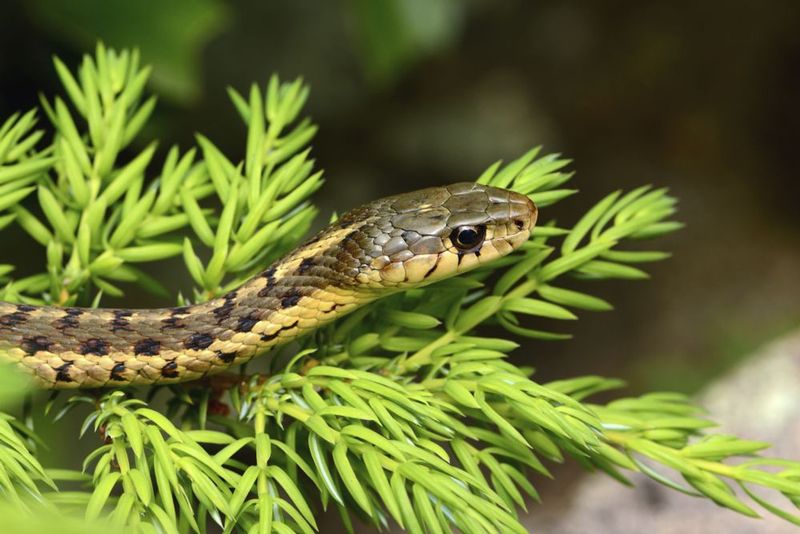
Acadia National Park in Maine, known for its rugged coastline, also shelters a variety of snake species. The common garter snake is a frequent inhabitant, often seen in the park’s rocky and forested areas.
These non-venomous snakes are harmless but play a crucial role in the park’s ecosystem. They control pest populations, benefiting other wildlife. When hiking or relaxing on the beaches, keep an eye out for these slithery residents. Appreciate their contribution to the natural balance, and remember that Acadia’s beauty includes its diverse wildlife, making every visit a richer experience.
Rocky Mountain National Park
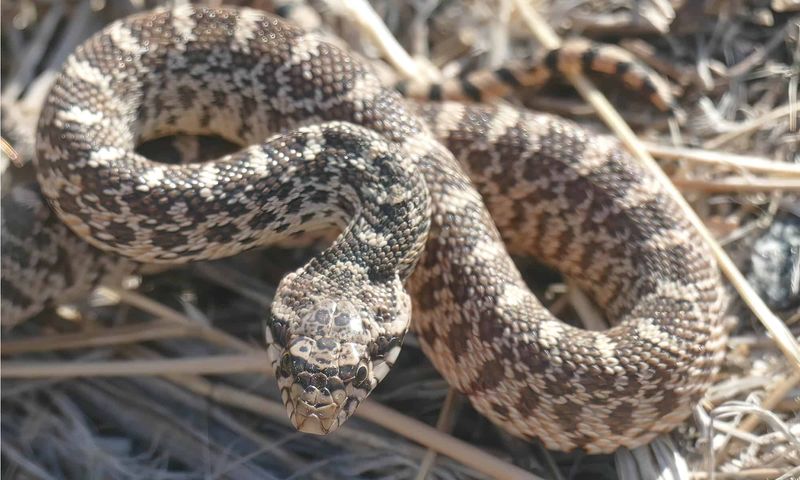
Rocky Mountain National Park in Colorado offers breathtaking vistas and a surprising number of snake sightings. The western terrestrial garter snake is commonly found along trails, enjoying the varied elevation and climate.
These snakes, while non-venomous, are vital to the park’s ecosystem. They help control insect and rodent populations. When hiking, stay alert and on the paths to avoid accidental encounters. Understanding and respecting the presence of these snakes enriches your visit. With proper precautions, your journey through the Rockies will be both awe-inspiring and educational, highlighting the delicate balance in nature.
Death Valley National Park
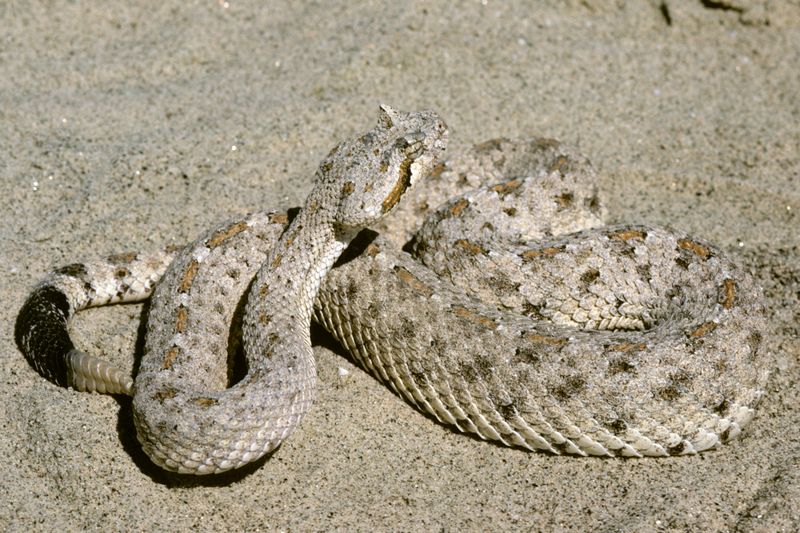
Death Valley National Park, one of the hottest places on Earth, is also home to the Mojave rattlesnake. This snake is known for its potent venom and typically dwells in the park’s arid environment.
When exploring Death Valley, it’s crucial to stay vigilant and stick to established trails. The harsh conditions mean snakes are more active during cooler hours. Wearing protective footwear and being aware of your surroundings can prevent unwanted encounters. Despite their fearsome reputation, these snakes are an integral part of the desert ecosystem, maintaining the balance of life in this extreme climate.
Yosemite National Park
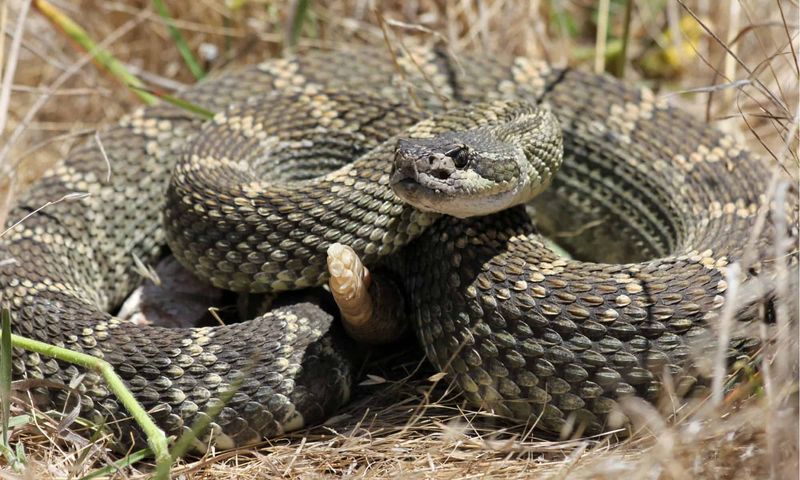
Yosemite National Park in California, famous for its majestic landscapes, also hosts the elusive rubber boa. This gentle snake is often found in meadows and forested areas, blending seamlessly into its surroundings.
While they may look intimidating, rubber boas are non-venomous and pose no threat to humans. These snakes contribute to the park’s biodiversity by controlling rodent populations. While exploring Yosemite, keep an eye on the ground and enjoy the intricate dance of nature. Embrace the park’s wildlife, knowing that each creature plays a role in preserving its beauty and ecological balance.
Glacier National Park
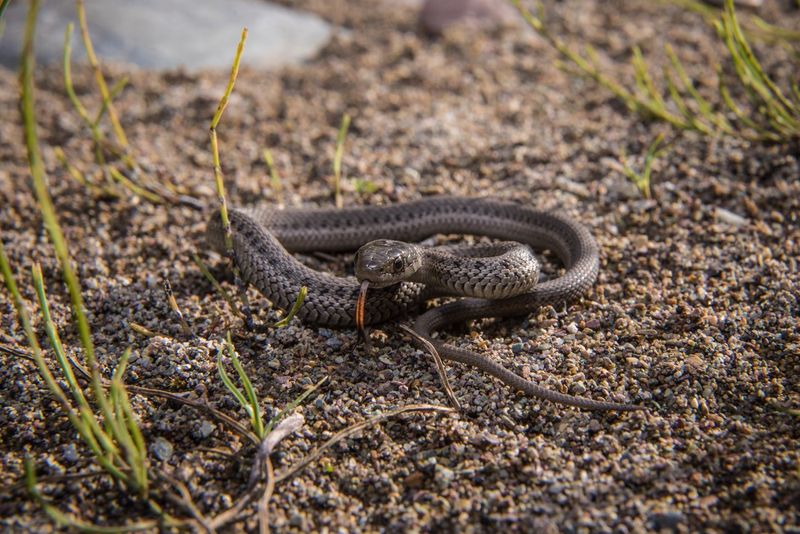
Glacier National Park in Montana, renowned for its stunning vistas, is also inhabited by the wandering garter snake. These snakes are often spotted near water sources, amid the park’s dramatic landscapes.
Non-venomous and shy, wandering garter snakes are crucial for controlling pest populations. When hiking, it’s important to stay observant and stick to trails. These snakes are easily overlooked against the park’s rugged terrain. Appreciating their presence enhances the experience of Glacier’s wild beauty. With respect and curiosity, your adventure in this park can be both safe and enlightening, offering a glimpse into its rich biodiversity.
Olympic National Park
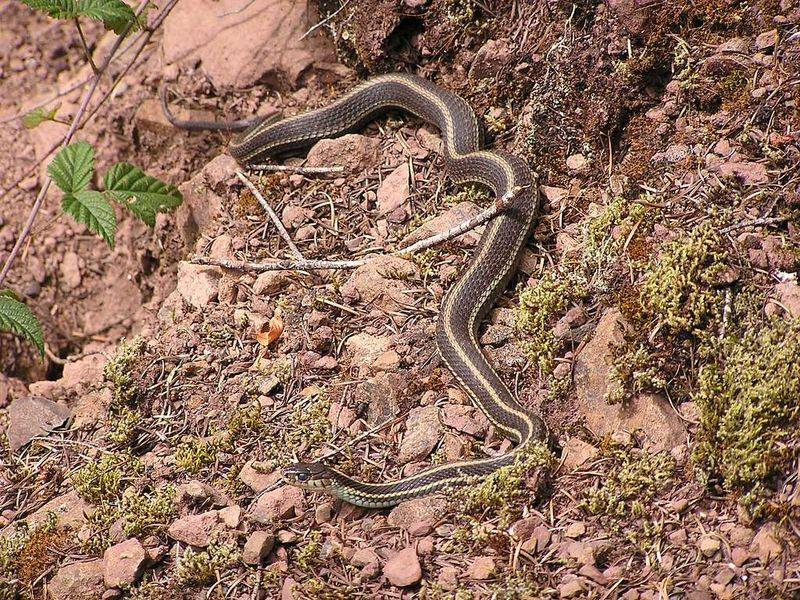
Olympic National Park in Washington is known for its diverse ecosystems and the northwestern garter snake. These snakes thrive in the park’s temperate rainforests and coastal areas.
Their presence highlights the park’s healthy environment. While hiking through dense forests or near water, keep an eye out for these harmless snakes. They play a vital role in the food chain. By observing them from a distance, visitors can appreciate the delicate balance within these lush habitats. Embracing the natural world in Olympic National Park offers a harmonious blend of adventure and education.
Canyonlands National Park
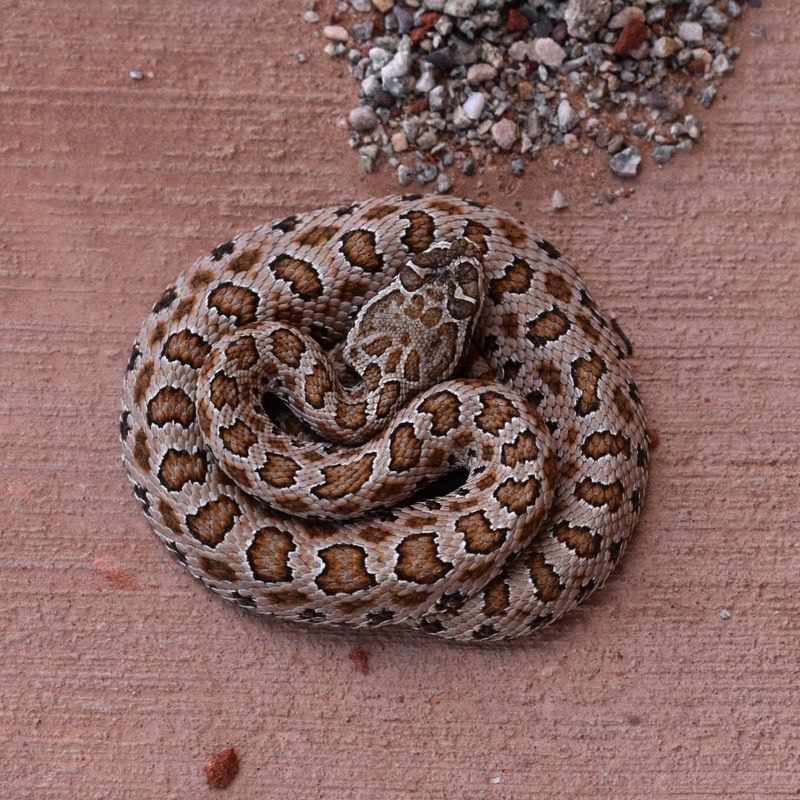
Canyonlands National Park in Utah offers stunning desert views and numerous snake sightings. The park’s rocky terrain is home to various rattlesnake species that are masters of camouflage.
When exploring, it’s essential to stay on marked trails and watch your step. These snakes are not aggressive but will defend themselves if threatened. Their presence is a reminder of the park’s wild and resilient nature. By respecting their habitat and remaining cautious, visitors can safely enjoy the breathtaking scenery and unique wildlife of Canyonlands, gaining a greater appreciation for this remarkable desert landscape.
Badlands National Park
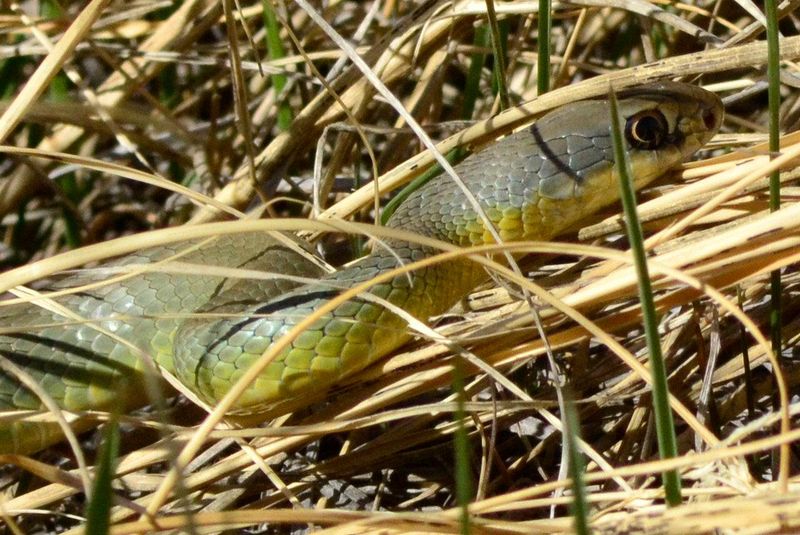
Badlands National Park in South Dakota is a land of dramatic formations and wildlife, including the prairie rattlesnake. This snake is often found in grassy areas and along trails, blending seamlessly with its environment.
Visitors should exercise caution, especially when hiking through tall grass. Wearing boots and keeping to paths can prevent unexpected encounters. Prairie rattlesnakes are vital to controlling rodent populations, maintaining ecological balance. Observing these creatures from a safe distance enriches the understanding of the park’s natural world. Respectful exploration ensures a memorable and safe adventure in this otherworldly landscape.
Sequoia National Park
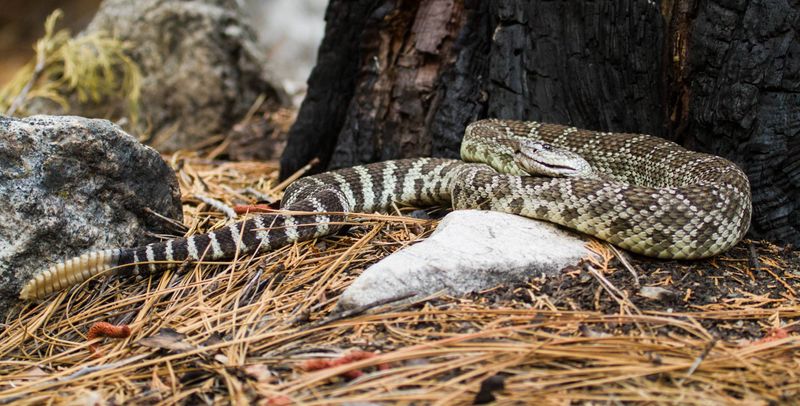
Sequoia National Park in California, known for its giant trees, also hosts the striking mountain kingsnake. These non-venomous snakes are often seen in the park’s forested areas, basking in sunlit clearings.
Recognizable by their vibrant colors, these snakes pose no threat to humans. They play a crucial role in the ecosystem, preying on rodents and other small animals. While exploring, remain attentive and respect their space. Sequoia’s natural wonders include its diverse fauna, and acknowledging this relationship enriches the experience. Enjoy the serene beauty of the park, knowing that every element contributes to its grandeur.
Arches National Park
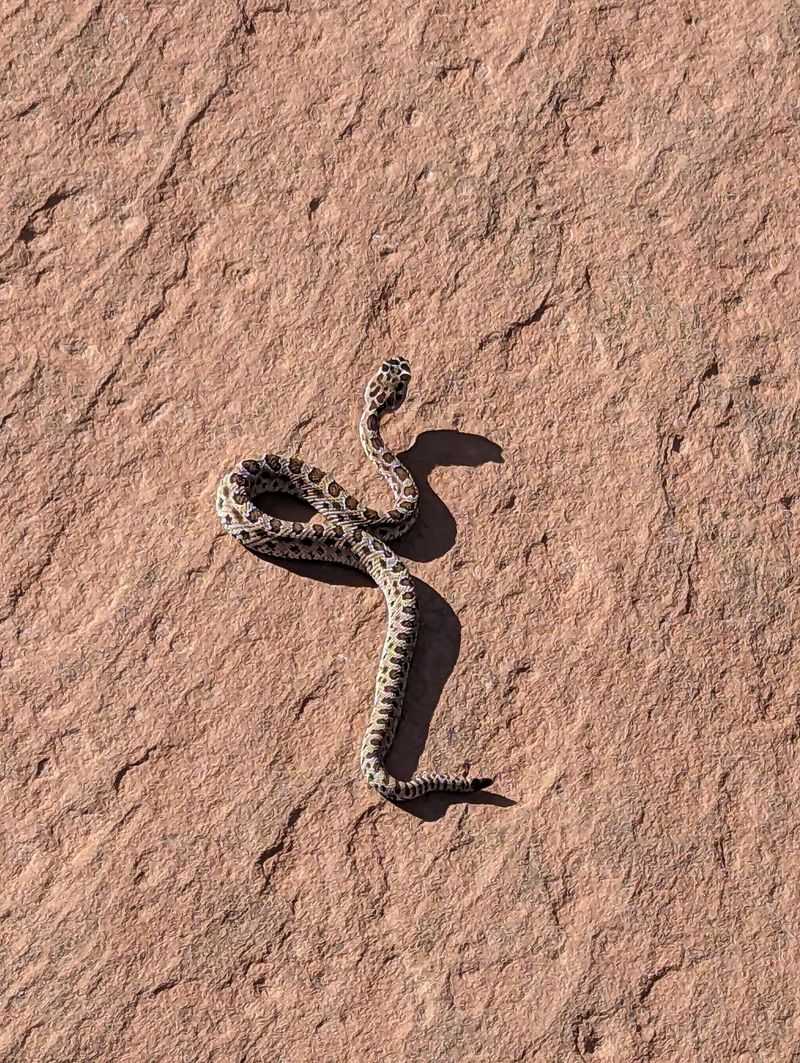
Arches National Park in Utah is famous for its natural rock formations and snake inhabitants. The park’s arid environment shelters several rattlesnake species that thrive among the arches and rocky terrain.
Visitors should stay on designated paths and be mindful of where they step. Rattlesnakes here are shy and will usually retreat if given space. Their presence is a testament to the park’s rugged wilderness. By respecting these creatures and their habitat, you ensure a safe and enriching visit. Enjoy the awe-inspiring arches and unique wildlife that make Arches a must-see destination.
Mesa Verde National Park
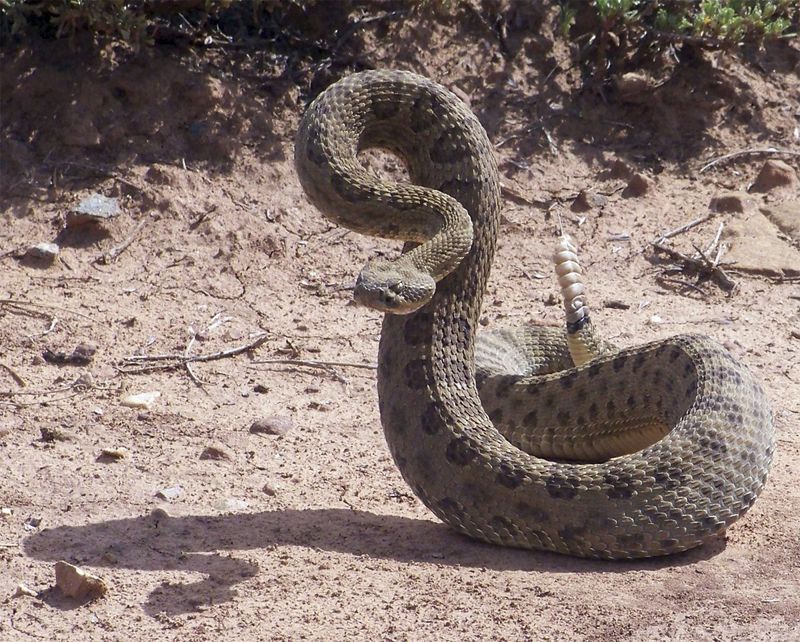
Mesa Verde National Park in Colorado, known for its archaeological significance, also hosts the bull snake. These snakes are commonly found in the park’s rugged terrain near ancient dwellings.
Bull snakes are non-venomous and beneficial for controlling rodent populations. While exploring the park’s historical wonders, remain aware of your surroundings. Stick to trails and watch for these snakes basking in the sun. Appreciating their role in the ecosystem adds depth to your visit. Mesa Verde offers a rich blend of cultural heritage and natural beauty, inviting respectful exploration and a deeper connection to the past.
Petrified Forest National Park
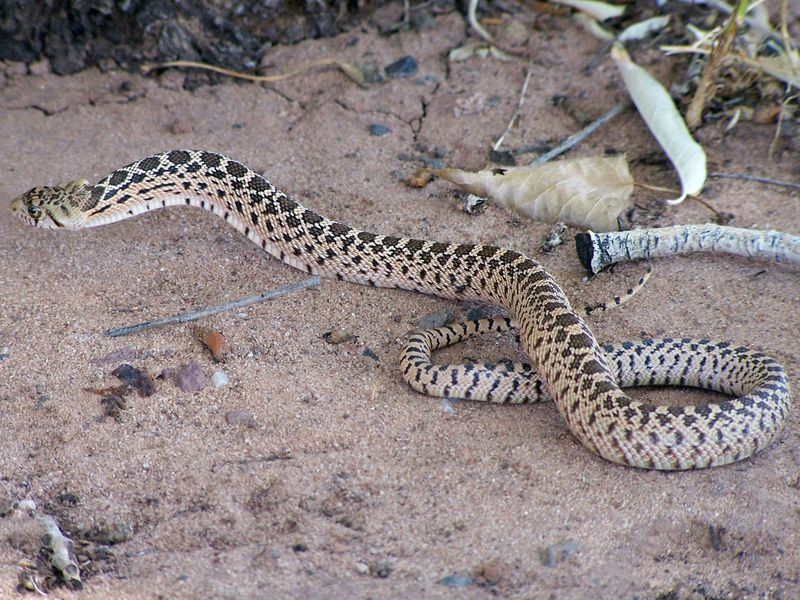
Petrified Forest National Park in Arizona, famous for its vibrant fossils, also harbors the elusive coral snake. These small, venomous snakes are rare but present in the park.
While the park’s petrified wood attracts many, it’s vital to remain cautious and stick to paths. Coral snakes are reclusive and usually avoid human interaction. Their vibrant colors serve as a warning. By respecting their habitat and exercising caution, you can safely explore the park’s prehistoric wonders. The intricate beauty of the petrified forest, paired with its living residents, offers a unique glimpse into Earth’s ancient past.
Hawaii Volcanoes National Park
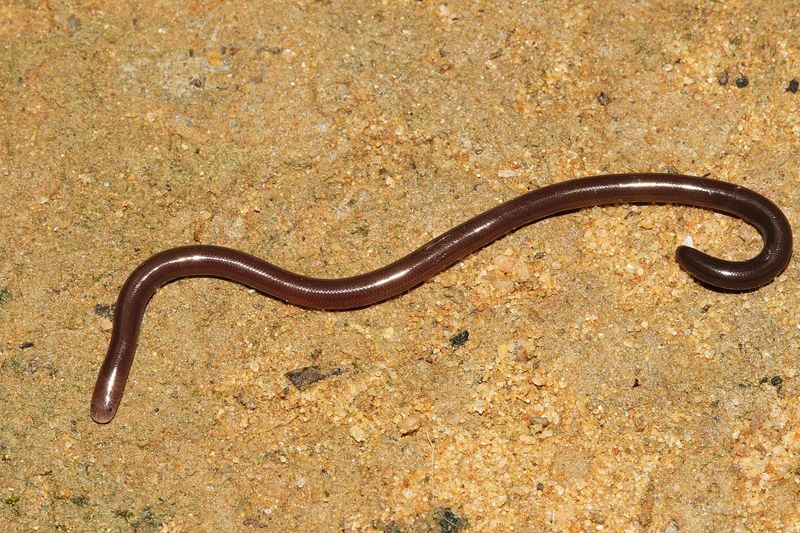
Hawaii Volcanoes National Park presents a unique ecosystem, home to the native Hawaiian snake. These non-venomous snakes are often found near volcanic landscapes, adapting to the park’s active terrain.
While these snakes pose no threat, it’s important to respect their presence and habitat. Hiking through lava fields and jungle paths requires caution and awareness. Understanding the role of these snakes in the park’s ecosystem adds to the experience. Hawaii Volcanoes offers a dynamic and vibrant environment, where the natural world and geological activity coexist. Embrace the adventure while appreciating the delicate balance of life on this volcanic island.

